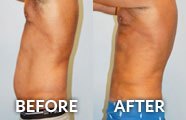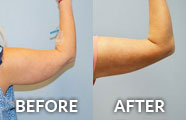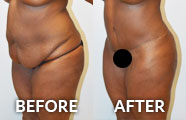When considering if breast augmentation surgery is right for you, it’s important you feel completely comfortable and confident before undergoing the knife. You will need to thoroughly research the procedure before choosing to proceed. In doing so, you are sure to come across an abundance of information; some true, some not. Here are guidelines on finding credible information as well as a breakdown of what’s true and what’s a myth.
It is true that…?
Breast implants should be replaced after 10 years. Not necessarily. While implants are not expected to last forever, there is no hard and fast rule as to how long they will last. Much depends on the type you choose, whether they be silicone, saline or silicone gel. Just like anything foreign to the body, there are known complications, and for implants that includes rupture or leakage that may require removal. Saline implant leaks are not dangerous as a silicone gel leaks, which must be removed. Another complication called capsular contracture which results in pain and implant hardening, distortion or displacement in the breast also requires removal. Routine check-ups are essential for detecting problems and heading off issues, including regular breast exams, mammograms, sonograms, or MRIs, depending on your age and risk factors.
Breast implants make breastfeeding dangerous or unlikely. For patients of childbearing age seeking implants, there can be concern over the potential risk implants pose to their baby during pregnancy or while breastfeeding. Studies show there is no known medical risk for babies born to or breast-fed by women with saline or silicone breast implants. Since the procedure involves incision and dissection of breast tissue, there is a small risk nipple sensation and breastfeeding could be affected, but certain surgical techniques help minimize interference with nipple sensation and breastfeeding. You should discuss surgical options with your doctor.
Breast augmentation patients can choose any size implant. The best surgeons listen to the patient’s preference on implant size, factor in their desired outcome and make a recommendation based on achieving the most naturally enhanced results. As such, implants should match the patient’s specific breast dimensions and characteristics, i.e., it’s width, diameter and position on the chest wall. A very large implant placed under a small, narrow breast may be unattractively visible at the top or sides of the breast. In addition, the weight of large implants can cause pressure, which coupled with the downward pull of gravity, can increase stretching in breast tissue. As they say, bigger is not always better.
Breast implants cause autoimmune disease or even cancer. Scientific studies involving hundreds of thousands of breast implant patients refutes links between breast implants and developing systemic or autoimmune diseases. Nor is there an increased risk of breast cancer associated with saline, silicone gel and structured saline implants that are available in the U.S. and FDA approved. FDA approval requires extensive testing and data collection to assess their safety and effectiveness. Recently, a rare type of lymphoma called Breast Implant-Associated Anaplastic Large Cell Lymphoma (BIA-ALCL) has been identified in association with implants. Different from breast cancer, BIA-ALCL usually presents as a late seroma (fluid accumulation) or a breast mass wherein treatment requires surgical removal of the implant and surrounding capsule.
Research Tips
Look for trusted cosmetic and plastic surgery websites that are reputable and accredited: American Board of Cosmetic Surgery, American Board of Plastic Surgery, American Academy of Cosmetic Surgery, American Society of Plastic Surgeons.
Find family and friends who have undergone breast augmentation surgery and learn what their personal experiences were; everything from the surgical process to their recovery to how they felt about the changes in their body, to their surgeon’s professionalism and performance.
Watch videos on websites like theplasticsurgerychannel.com to view what actually happens in surgery, the common risks of the procedure, and the realities of recovery


